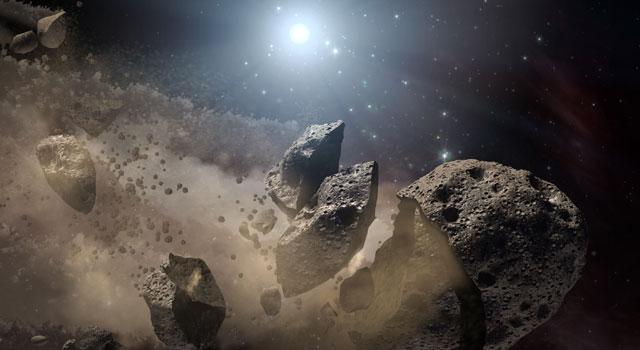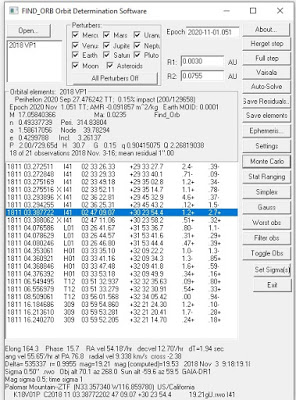
This artist's concept shows a broken-up asteroid Image:----- Courtesy NASA/JPL-Caltech

This artist's concept shows a broken-up asteroid Image:----- Courtesy NASA/JPL-Caltech
Throughout the year, tiny rocks strike the Earth's atmosphere and creating spectacular fireballs. Most of these rocks travel through space unknown to habitats of Earth until they strike the atmosphere. If we are lucky, the fireball will be seen and reported. If we are fortunate, the fireballs will be capture on film. The vastest majority of fireballs are of no danger what so ever. Most fireballs are like rainbows in that they are cool. Four times in the past, these rocks travel through the field of vision of an asteroid observer before impact. The observation was taken. The rocks were given designations, like 2014 AA( i.e., the first discovery of the first half of January in 2014), and the rocks "became" asteroids. These four asteroids were on the safe side when it comes to size.
In the first half of November 2018, an asteroid was discovered and give the designation 2018 VP1. This asteroid is tiny [1.8 m - 3.9 m ( 5.90551 to 12.79528 feet) ]. This asteroid was only observed 21 times over 13 days.
In orbit determination, one calculation of what orbit will place the object in the sky where it was seen. If one knows an object's orbit, it knows where it is going and where it will be in the sky. All observations are "imperfect," so there will be many similar orbits. If one were to create virtual asteroids for each of the similar orbits and did a simulation, one would see over time. The virtual asteroids move apart from each other to create an uncertainty region. The real asteroid is somewhere within the uncertainty region. When doing the simulation, if any of the virtual asteroids impact the Earth, they become virtual impactors. There is 'Non-Zero' probability of the real asteroid hitting the Earth. By calculating the percentage of virtual impactors to virtual asteroids, one can calculate the risk of impact.
There is a very low-risk impact 2018 VP1 will on 2020-11-02. However, it must be restarted this asteroid is tiny [1.8 m - 3.9 m ( 5.90551 to 12.79528 feet) ].
We have a fireball this size about two times a year. Also see Sentry: Earth Impact Monitoring
@kpheider asked me to calculate a path of risk for #2018VP1. It's only a few meters across but JPL's SENTRY has it at 1 chance in 240 of impacting on Nov 2, 2020 (ESA/NEODys has it at 1 in 400). Path of risk stretches across the Pacific. Calculated with SOLEX 12.1 pic.twitter.com/U8SGb8CvOl
— Peter Thomas (@ptastro1) July 26, 2019
Note: this was edited to add links missing data formatting, typos, replace, the image of Find_orb computing, fixing bad links .
This was first posted By Steven M. Tilley http://lagniappeobserving.blogspot.com/2020/06/2018VP1nformationSheet.html Used with permission